
TARGET 120208
ONE MORNING IN "THE HYPERBOLOID"
Keeping things cool
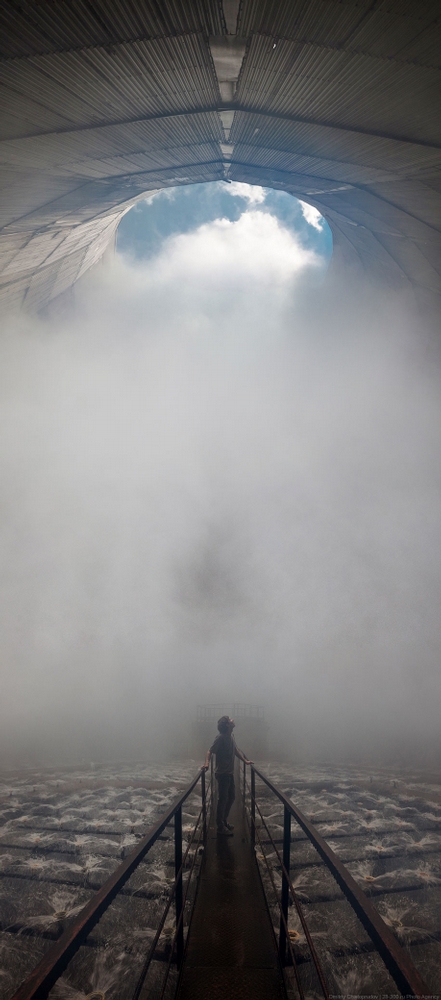
A bit of the morning sky
The city of Karaganda (also known locally by the Kazakhstani name Qaragandi), is located in Kazakhstan. The city generates its electricity by burning coal. In fact, they must burn a little over 2 million tons of coal a year to keep the city going. Burning that much means that there is an awful lot of heat involved. In fact, it generates so much heat that the furnaces need to be cooled to keep them from melting over time. They cool the furnaces by surrounding them with water. But then they have all that boiling hot water to deal with, so they still have a cooling problem.
The city pipes some of that hot water out to provide free heat to the buildings and homes in the city. But that's only a solution during cold weather, when the weather has gotten down to -42.9 °C (-45.2 °F) and the city has the heaters on. But it is pretty useless in the summer when the temperature has gotten up to 40.2 °C (104.4 °F). But even in the Winter, there is still more heat to get rid of than the city uses. As a result, they have built a water cooling tower to cool the water to where it is cool enough to be pumped back around the furnaces to keep them from burning up. The cooled water cools the furnaces and reheats to boiling as it does. Then, the whole process of cooling the water back down again starts over in an endless cycle.
A photographer, Dmitri Christoprudov, decided to document the process that takes place within the oldest cooling tower. He and another photographer (unnamed) went through the cooling tower one morning, and the pictures you see here are part of the result.
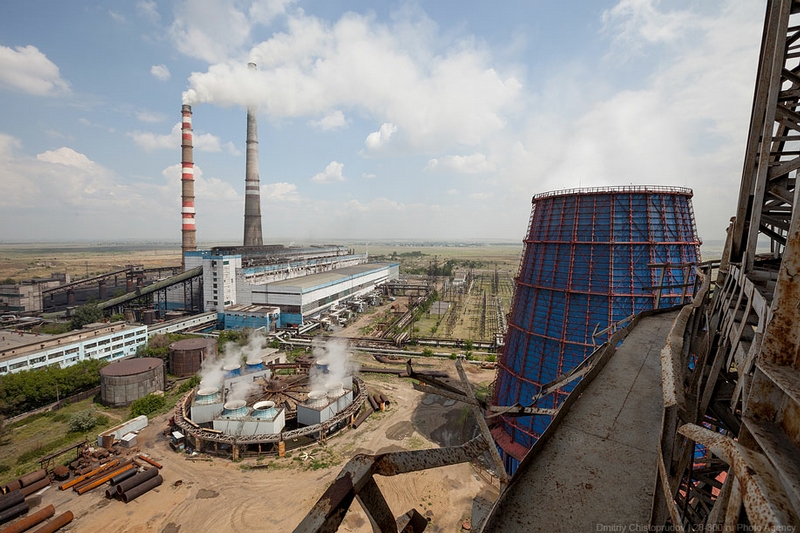
The facility
You can see the overall facility In the picture above. There is a newer cooling tower than the one visited by the journalist. It is the large, round, dark blue thing on the right that has the structural braces on its outside. There are also 8 fan-cooled towers in a circle in the lower center of the picture. These towers cool more efficiently, but their huge fans consume a significant percentage of the power the plant produces, since they not only have to cool the water from the furnaces, but also have to cool their own fan motors to keep them from burning out.
The tower visited in this story is the framework one lining the right side of the picture. It is older, higher, and built in such a way as to require only enough power to pump the water into it. It is called "The hyperboloid" because, just like the cooling towers used at atomic plants, its inside shape is curved upwards in a hyperbolic arc instead of being straight-sided conical. This was the original design because its shape causes a natural updraft of air, eliminating the need for power-consuming exhaust fans at the top.
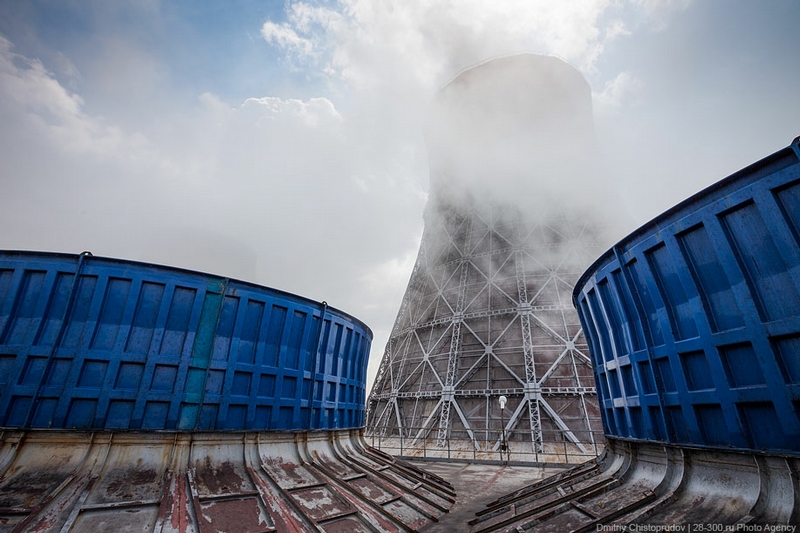
The visited tower
The tower the journalist takes us through is shown in the center of the picture, above.
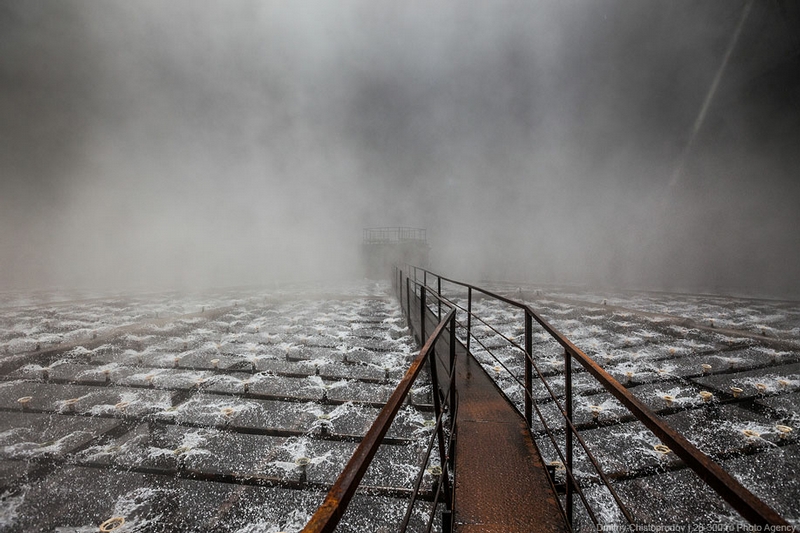
Inside the tower
The bottom area inside the hyperboloid consists of hundreds of sprinklers that spray the steaming hot water into the air in order to cause evaporation. The heat rising from the hot air causes a very strong updraft, carrying the steam up and out of the top. But the inside of the tower remains very hot, so the cooling of the water is never sufficient. It only allows for 6 degrees centigrade (42.8 degrees fahrenheit) of cooling.
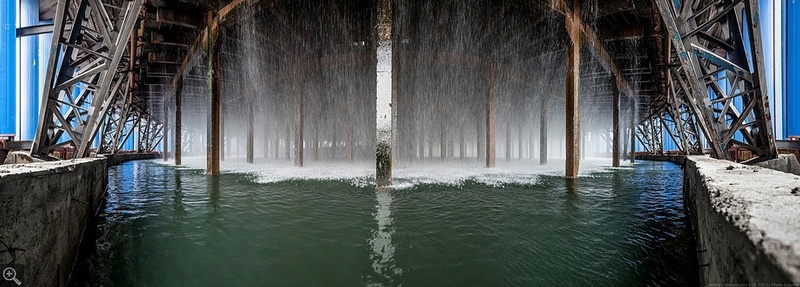
The waterfall
So, the sprinkler system is placed 10 meters (about 33 feet) high in the tower. The overflow from that cooling chamber produces a circular waterfall which further cools the water as it drops into a cooling pond below. The pond is set deep into the earth so the flow through it will be slow, allowing the water to cool to a temperature where it can be pumped back through the system to cool the furnaces.
This old-style cooling tower has to be very large and require more time for the water to cool, but it operates in a totally natural way, requiring no more power than the pumps that pump water to the sprayers.
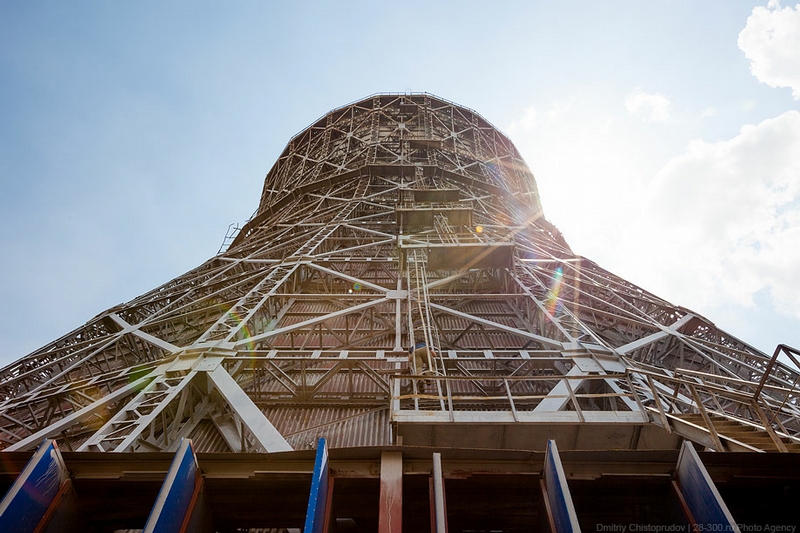
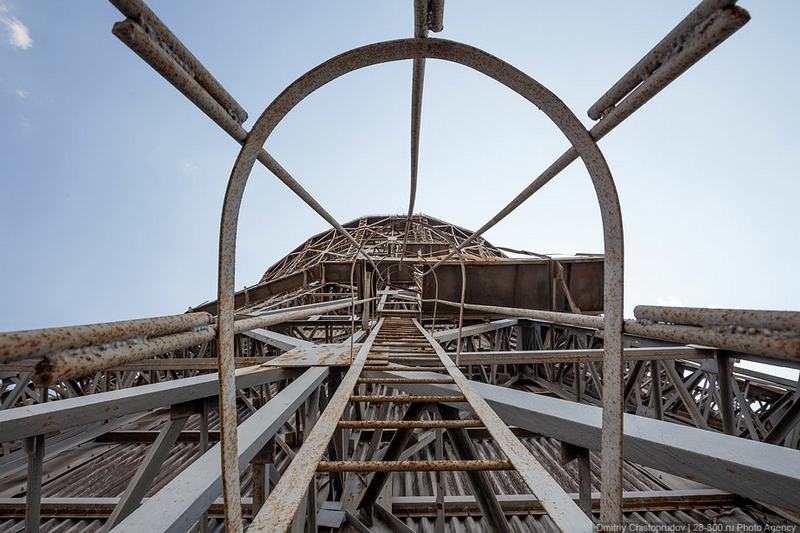
Ah, but there is also a ladder....
But what good journalist/photographer wouldn't see a ladder to one of the highest places in the city and not want pictures from the top... even though the only way there is up a rusty old ladder.
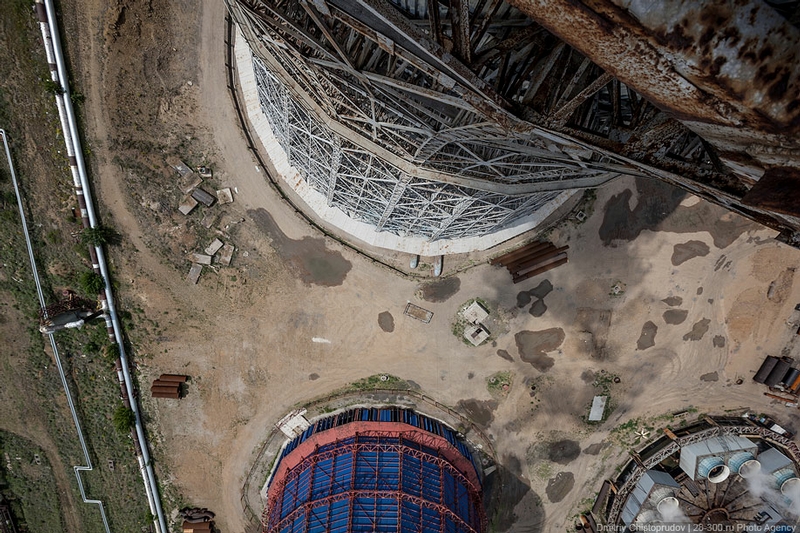
Didn't anyone ever tell you not to look down?
Looking down from the top, you can see the ground 78 meters (256 feet) below.

Fortunately, there is a walkway at the top
where you can get a beautiful view of the city
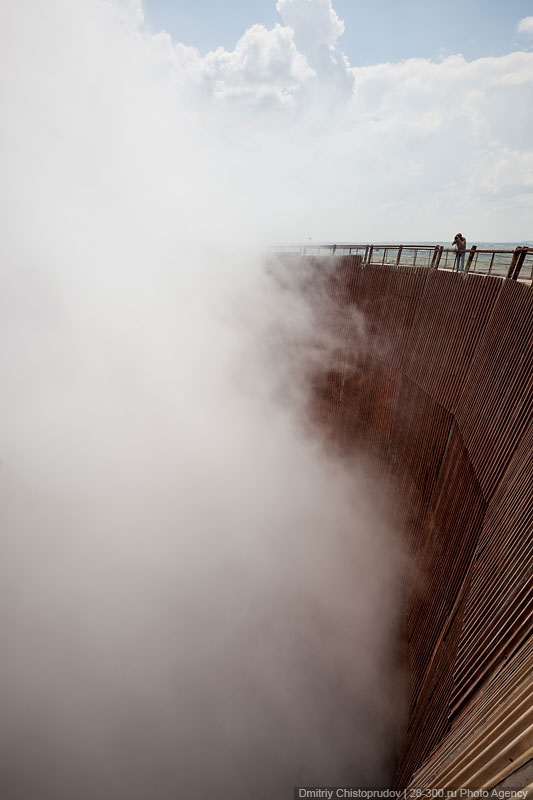
But all you can see looking into the tower is steam
FEEDBACK MAP
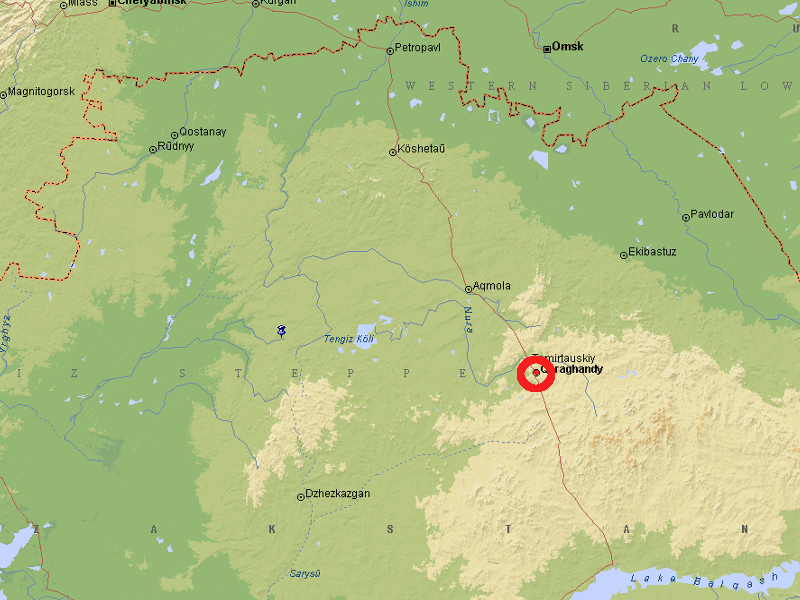
If you got impressions for which this feedback is insufficient, please take a look at the following web sites for more:
English Russia (to whom we are thankful for the pictures
and where more information and pictures can be found)
Wikipedia (facts about the city)